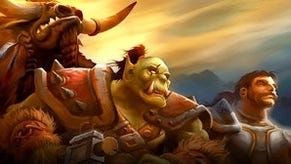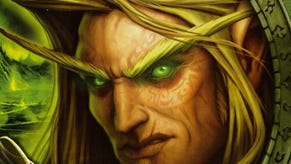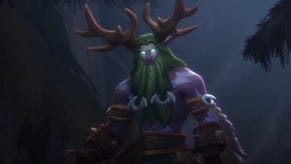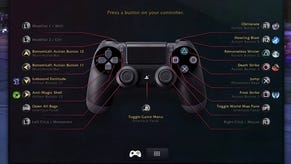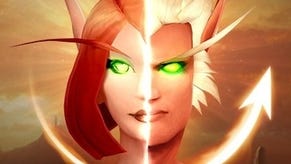World of Warcraft: The Burning Crusade
Blocked your Draenei?
Here's an interesting stat for you: almost as many people around the world play World of Warcraft as bought the Xbox 360 in the first year of its life. Or indeed just about any other console in the first year of its life. And they all pay a subscription fee. Putting it another way, there are more people playing WoW than the entire population of Greater London. Or, if you want it in cold, hard cash, conservative estimates peg the income from WoW subscriptions at about 100 million dollars per month.
That's the obligatory "World of Warcraft is very big, you know" paragraph out of the way - but it does serve a useful purpose, since it explains why there's so much excitement about something which non-players shrug and dismiss as "just an expansion pack". The Burning Crusade, the first commercial expansion to the game, launched last week - and it was marked by long queues at midnight openings, a Collector's Edition box which goes for hundreds on eBay, news headlines on prime-time bulletins and a lot of terribly excited fans. HMV at London's Oxford Circus, one of the largest game, music and movie stores in the world, dedicated its entire enormous display screen to the Burning Crusade trailer last weekend - an astonishing decision for any PC game, let alone an expansion pack.
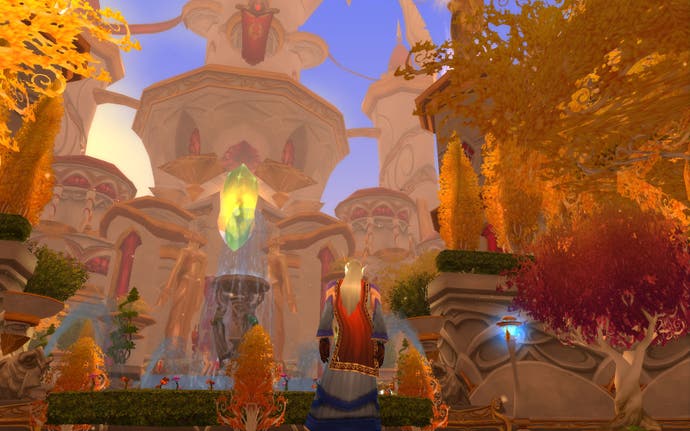
The Burning Crusade presents an interesting challenge for a reviewer, however. How do you mark a game which will be played entirely differently by different groups of people - a game whose audience will include both entirely new players, and those who have already devoted months of their lives to World of Warcraft? How do you mark a game whose content will take weeks to explore, and whose quirks and overall impact on the experience will take months to assess? Certainly, we could write in very general terms about how the new zones look very nice, how there's lots of new content and plenty of new things to do, slap an eight or a nine on the end and be home in time for tea - but that wouldn't actually say anything useful, interesting or relevant about a game experience so subjective and so expansive.
Instead, what we're going to do is to assess The Burning Crusade over the course of a few articles - starting with this one. There are two key additions which have been made to World of Warcraft by this pack - a pair of new playable races, with their own unique cities, towns and areas to explore, and a whole new continent called Outland, which is only accessible to players who are already at level 60.
In this first "review", we're going to address the part of the Burning Crusade which is relevant to new players and people who aren't already at level 60 - the two new races and their zones. Later on, when we've had a proper chance to assess it, we'll run a feature delving into Outland and the new features in place for high-level players. If you're a new player thinking about trying out WoW, or an existing player planning to restart the game with a character from one of the new races, though, today's review is what you want to read.
Burning Rangers
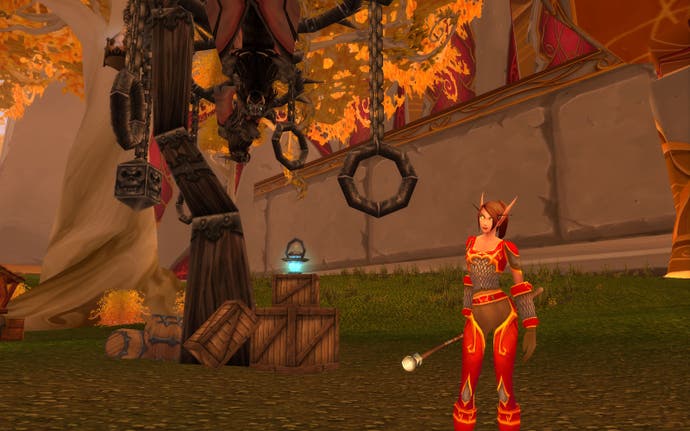
Where many MMOG expansions take the route of introducing new character classes to existing races, Blizzard has taken the opposite approach with The Burning Crusade. There are no new classes here - perhaps a testament to the argument that WoW has already boiled down RPG character classes to a solid and well-matched core set - but instead there are two new races, one on each side of the Horde / Alliance divide which lies at the heart of World of Warcraft's storyline.
On the Alliance side, the lumbering Draenei join the fray - a purple-tinged race with cloven hooves rather than feet, notable especially for the tentacle-like "beards" sported by the blokes (which makes them look like peculiarly cuddly extras from either a Lovecraft book, or Legend of the Overfiend). The Horde, meanwhile, gain their first "pretty" race - the Blood Elves, a group of slightly effeminate pointy-eared types in the Legolas archetype (you know, the mincing one from Lord of the Rings who was played by the mincing one from Pirates of the Carribean - no, the other mincing one).
Each of these races has their own capital city and a pair of brand new game zones, which are laden with monsters to kill and quests to complete which will bring you up to level 20 or thereabouts, at which point you're ready to head out into the wider world of Azeroth and follow broadly the same pathways through the game which other races tread. The new starting zones, however, are crucial to the game from a storytelling perspective if nothing else, as the time you spend playing there should fill you in on the background to your race and to the wider plot of the game.
Burning? More like Flaming

When you create a character in either of the two new races, you get the option of customising his (or her) appearance - and while this has never been a particularly strong point of WoW (with limited options resulting in all too many "clone" characters in the game), the Draenei and Blood Elves are both substantial improvements over previous races in this regard. Both races have a range of striking styles for various prominent features like hair, beards or horns - and the Blood Elves in particular appear to be a concession to the anime fan contingent in this regard, sporting haircuts that wouldn't be out of place in anything from DragonBall Z to Gundam Seed. You can even produce a pretty convincing replica of Final Fantasy VII's Sephiroth with the Blood Elf character options, if you want - although be assured that there are probably 20 clones called things like "sephiROXlol" already running around out there, so it's probably best not to.
It's not just visuals which set the new races aside from their existing counterparts, however. The Draenei have an affinity for light magic, so they get a unique heal spell and an innate resistance to shadow spells, as well as some unique abilities for their priests (healer class); the Blood Elves, however, have the racial ability to drain mana (magic casting points) from their enemies and use them for themselves in a limited fashion, as well as a small resistance to all magic spells. Blood Elves playing the Paladin class (more on that in a second) will also have slightly different abilities to other paladins, including a unique spell that drains your own health to do loads of damage to a foe.
That brings us on to one of the biggest changes of the expansion pack - previously you could only play a Paladin if you were a member of the Alliance, but they're now available to the Horde via the Blood Elves. Similarly, the Shaman class was previously only for the Horde, but the Alliance can play as them now thanks to the Draenei. This feature caused some uproar when it was first announced, but the game goes to some length to make sure that this change fits in with the storyline and there's certainly no sign so far of anything in the game being broken or undermined by it - although there are really rather a lot of Blood Elf paladins and Draenei shamans running around, perhaps due to the novelty factor.


